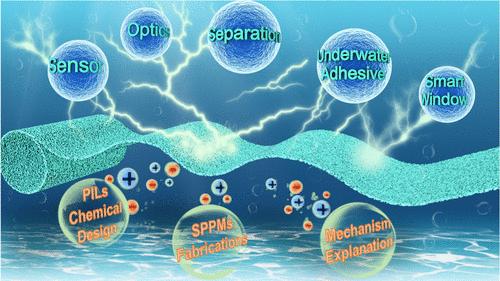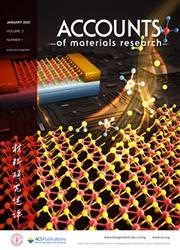Water Molecule as a Dynamic Cross-Linker for Creating Multifunctional Poly(ionic liquid) Porous Membranes
IF 14.7
Q1 CHEMISTRY, MULTIDISCIPLINARY
引用次数: 0
Abstract
Supramolecular polyelectrolyte porous membranes (SPPMs), which structurally integrate supramolecular material properties, electrolyte characteristics and pore confinement effects into a membrane, represent an exciting class of materials targeted for a broad range of applications in modern science and technology. However, owing to the intrinsic water solubility of conventional polyelectrolytes and the complex bonding mode arising from their charged nature, a long-standing challenge in the field has been the development of reliable preparation methods for fabricating high-quality SPPMs with controllable pore architectures and programmable functionalities. There have been a few characteristic attempts at achieving SPPMs. One involves layer-by-layer assembly of polyelectrolyte species through the strategic utilization of “orthogonal” noncovalent interactions; the other involves self-assembly of amphiphilic polyelectrolyte block copolymers, forming SPPMs. However, considering the multiple tedious preparation steps, the use of large amounts of organic solvents, and/or expensive precursors, these approaches suffer from some inherent limitations for the scalable preparation of SPPMs. Undoubtedly, direct assembly of polyelectrolytes in water to produce SPPMs is a priority because of its eco-friendly nature and ease of scaling up.

以水分子为动态交联剂创建多功能聚(离子液体)多孔膜
超分子聚电解质多孔膜(SPPMs)从结构上将超分子材料特性、电解质特性和孔隙约束效应整合到膜中,是一类令人振奋的材料,可广泛应用于现代科学和技术领域。然而,由于传统聚电解质固有的水溶性及其带电性质所产生的复杂键合模式,该领域长期以来面临的一个挑战是开发可靠的制备方法,以制造具有可控孔结构和可编程功能的高质量 SPPMs。在实现 SPPMs 方面,已经进行了一些有特色的尝试。一种是通过战略性地利用 "正交 "非共价相互作用,逐层组装聚电解质物种;另一种是自组装两亲性聚电解质嵌段共聚物,形成 SPPMs。然而,考虑到多个繁琐的制备步骤、大量有机溶剂的使用和/或昂贵的前体,这些方法在规模化制备 SPPMs 方面存在一些固有的局限性。毫无疑问,在水中直接组装聚电解质以制备 SPPMs 因其环保性和易于推广而成为当务之急。
本文章由计算机程序翻译,如有差异,请以英文原文为准。
求助全文
约1分钟内获得全文
求助全文

 求助内容:
求助内容: 应助结果提醒方式:
应助结果提醒方式:


